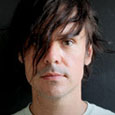Red Crown Crane Story

 Singer, songwriter and human rights public advocate, Foster is best known for his role as lead singer and songwriter for the rock band “Your Favorite Enemies”; for being the leader of the new folk band “The Ghost Of Henry’s Shadow”, as well as for being an active “Amnesty International” spokesperson.
Singer, songwriter and human rights public advocate, Foster is best known for his role as lead singer and songwriter for the rock band “Your Favorite Enemies”; for being the leader of the new folk band “The Ghost Of Henry’s Shadow”, as well as for being an active “Amnesty International” spokesperson.

 Keyboardist, writer, fashion designer, painter and art crafter, Miss Isabel has been dedicating her life to creation since childhood. Well known for being the keyboard player for rock band “Your Favorite Enemies”, she also gave life to several art projects and collaborated with many multi disciplinary artists over the years, from which she stands under different artistic monikers. Besides her artistic projects, Miss Isabel also supports numerous woman rights organizations for which she regularly acts as a public speaker.
Keyboardist, writer, fashion designer, painter and art crafter, Miss Isabel has been dedicating her life to creation since childhood. Well known for being the keyboard player for rock band “Your Favorite Enemies”, she also gave life to several art projects and collaborated with many multi disciplinary artists over the years, from which she stands under different artistic monikers. Besides her artistic projects, Miss Isabel also supports numerous woman rights organizations for which she regularly acts as a public speaker.

 In memory of our brothers, sisters, friends and loved ones who disappeared in the tsunami that occurred in Japan in March 2011.
In memory of our brothers, sisters, friends and loved ones who disappeared in the tsunami that occurred in Japan in March 2011.
In honor of the courage and determination of the men and women who decided to dedicate their lives to the rebuilding of their community, based on the vivid faith in their vision of a brighter tomorrow for their own and for the upcoming generations and to anyone courageously resolute to embody hope in their daily craft of better tomorrows.
“A Crane symbolizes immortality… just as the incarnation of a dream defines eternity”
A. Foster
In the midst of the tragedy that occurred in Japan in March 2011, Alex Foster and the members of the band Your Favorite Enemies, who initiated the “Hope Project: For Japan Relief”, had the humbling privilege to visit the Minami Sanriku Cho Volunteer Center. They had the honor of witnessing the courage and determination of the men and women who decided to dedicate their lives to the rebuilding of their community, based on the vivid faith in their vision of a brighter tomorrow for their own and for the upcoming generations.
From that inspiring moment arouse in Alex the profound desire to give life to something that would honor such determination and courage, as much as it would incarnate the hopeful and heartfelt character of anyone resolute to build, rebuild or craft their lives based on their own visions and dreams. He explains:
“When I saw the bright shining light flowing from the eyes of all those men and women -who could have spent the rest of their lives mourning the loss of their own and cursing the elements that ripped away everything they built, but rather were sharing their will not only to survive but to fully live- I felt really reverent and uplifted by such a vivid spirit… I wanted to honor that commitment… I wanted to craft something that would be more than a “momentary symbol of hope” based on the remembrance of a tragedy… I wanted faith to arise and life to be celebrated… and the crane, who symbolizes immortality was the perfect embodiment of such project”

